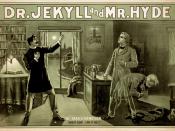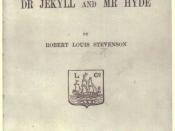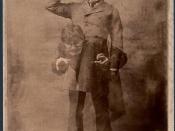"How did the Victorian authors create fear in thier readers?"
This essay compares three Victorian Stories - 'Dr Jekyll and Mr Hyde' by Robert Lewis Stevenson, 'The Red Room' by H.G.Wells and 'The Man with the twisted lip' by Sir Arthur Conan Doyle. These authors have toyed with the readers' belief as well as questioned their way of life and opinions. These weaknesses seem to play a vital part in the stories as they are used very effectively against the audience.
Right and Wrong. Joy and Despair. Good and Evil. The juxtaposition of these themes are addressed by Robert Lewis Stevenson in his work, 'The Strange Case of Dr. Jekyll and Mr. Hyde.' The story is told from the point of view of John Utterson, a lawyer and friend to the brilliant scientist, Dr. Henry Jekyll. After relating a disturbing tale of an angry fiend assaulting a small girl, Utterson begins to question the odd behaviour of his friend.
As he investigates further into the life of Dr. Jekyll he uncovers a story so horrific, so terrifying, that he can hardly believe it.
Stevenson creates the character Hyde to goad fear in his readers. He gives Hyde negative descriptions, making him seem hostile, also he plays with the religious beliefs of Victorians as Hyde's actions are describes as 'hellish' and also a man who's personality was like 'Satan' himself. These words would have been enough to frighten a Victorian reader and also draw them deeper into the story by capturing their attention. It would also make them to compare these descriptions to people of real life.
Stevenson describes Hyde as being a 'damned juggernaut', meaning him to be a large vessel-machine, rather than a man. This would have made the Victorians shiver with the prospect of having...



Top notch
Extremely good. Except you could have written more in the conclusion.
2 out of 2 people found this comment useful.